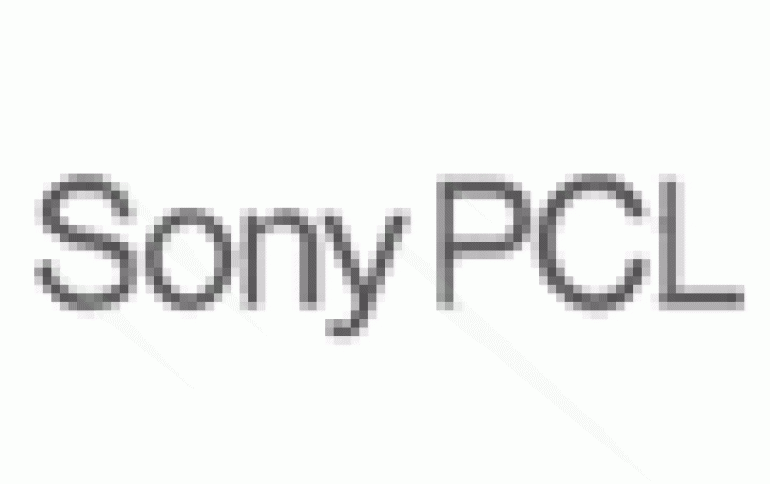
DNP and Sony PCL Produce New Hologram Against Counterfeited Products
Dai Nippon Printing Co., Ltd. (DNP) and Sony PCL Inc. (Sony PCL,) have started production of a new hologram for security uses, which is capable of storing dynamic picture images created with stereogram technology.
The newly developed hologram has the capacity to store in excess of 100 image frames on a single hologram, making it extremely difficult to counterfeit. With the new hologram, moving images such as animation and live action can be played back by changing the viewing angle. As a result, it allows easy discrimination between genuine and counterfeit goods. The companies have already started receiving orders.
Unlike existing mainstream embossed holograms, which record images in physical relief on the surface of the material, the newly developed hologram, called 'Lippmann hologram', stores images by recording interference patterns in photo-sensitive layers produced by laser.

Lippmann holograms are extremely difficult to counterfeit, as it is difficult to obtain the photo-sensitive materials used, as Lippmann holograms are capable of producing unique image expressions not possible with other hologram formats, and as they require specialized manufacturing technology. DNP and Sony PCL have made it even more difficult to illicitly reproduce the holograms by providing them with the capacity to record in excess of 100 image frames on a single hologram via the unique application of line order recording technology, which has made it possible to record dynamic images, including flying logos and animation.
DNP and Sony PCL said that they can supply the new hologram in various shapes and formats in answer to specific needs, including instances where the product takes the format of seals, heat-transfer foils and tamper-evident seals.
Technology Background
Each parallax image displayed on the LCD is horizontally compressed into a vertical slit by a cylindrical lens. The beam of the slit and the reference beam form an interference pattern, which is then recorded on the photo-sensitive material on the glass substrate. The hundreds of vertical slits, placed sequentially side-by-side, form the larger hologram.

DNP commenced development of hologram products in 1972, and has since manufactured and marketed numerous hologram materials. Sony Corporation commenced application research into holograms in 1989, and has engaged in image recording technology. By combining this hologram technology with contents manufacturing technology, and the high precision master manufacturing technology nurtured through the development of CDs, DVDs, and Blu-Ray Discs, Sony PCL aims to develop a market where holograms are positioned as a new visual image product. Sony PCL aims to expand uses to a variety of areas beginning with the security market.
For more information, vivit Sony PLC, http://www.sonypcl.jp/e/index.html
Unlike existing mainstream embossed holograms, which record images in physical relief on the surface of the material, the newly developed hologram, called 'Lippmann hologram', stores images by recording interference patterns in photo-sensitive layers produced by laser.

Lippmann holograms are extremely difficult to counterfeit, as it is difficult to obtain the photo-sensitive materials used, as Lippmann holograms are capable of producing unique image expressions not possible with other hologram formats, and as they require specialized manufacturing technology. DNP and Sony PCL have made it even more difficult to illicitly reproduce the holograms by providing them with the capacity to record in excess of 100 image frames on a single hologram via the unique application of line order recording technology, which has made it possible to record dynamic images, including flying logos and animation.
DNP and Sony PCL said that they can supply the new hologram in various shapes and formats in answer to specific needs, including instances where the product takes the format of seals, heat-transfer foils and tamper-evident seals.
Technology Background
Each parallax image displayed on the LCD is horizontally compressed into a vertical slit by a cylindrical lens. The beam of the slit and the reference beam form an interference pattern, which is then recorded on the photo-sensitive material on the glass substrate. The hundreds of vertical slits, placed sequentially side-by-side, form the larger hologram.

DNP commenced development of hologram products in 1972, and has since manufactured and marketed numerous hologram materials. Sony Corporation commenced application research into holograms in 1989, and has engaged in image recording technology. By combining this hologram technology with contents manufacturing technology, and the high precision master manufacturing technology nurtured through the development of CDs, DVDs, and Blu-Ray Discs, Sony PCL aims to develop a market where holograms are positioned as a new visual image product. Sony PCL aims to expand uses to a variety of areas beginning with the security market.
For more information, vivit Sony PLC, http://www.sonypcl.jp/e/index.html













